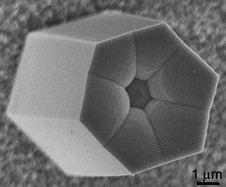Facile hydrothermal fabrication of hollow hexagonal hydroxyapatite prisms
Abstract
Well-defined hollow hexagonal prisms of hydroxyapatite (Ca10(PO4)6(OH)2) have been grown facilely on an

* Corresponding authors
a
School of Chemistry, Seoul National University, NS60, Seoul, Republic of Korea
E-mail:
djjang@snu.ac.kr
Fax: +82 2 875 6624
Tel: +82 2 875 6624
Well-defined hollow hexagonal prisms of hydroxyapatite (Ca10(PO4)6(OH)2) have been grown facilely on an

 Please wait while we load your content...
Something went wrong. Try again?
Please wait while we load your content...
Something went wrong. Try again?
D. K. Lee, J. Y. Park, M. R. Kim and D. Jang, CrystEngComm, 2011, 13, 5455 DOI: 10.1039/C1CE05511A
To request permission to reproduce material from this article, please go to the Copyright Clearance Center request page.
If you are an author contributing to an RSC publication, you do not need to request permission provided correct acknowledgement is given.
If you are the author of this article, you do not need to request permission to reproduce figures and diagrams provided correct acknowledgement is given. If you want to reproduce the whole article in a third-party publication (excluding your thesis/dissertation for which permission is not required) please go to the Copyright Clearance Center request page.
Read more about how to correctly acknowledge RSC content.
 Fetching data from CrossRef.
Fetching data from CrossRef.
This may take some time to load.
Loading related content
